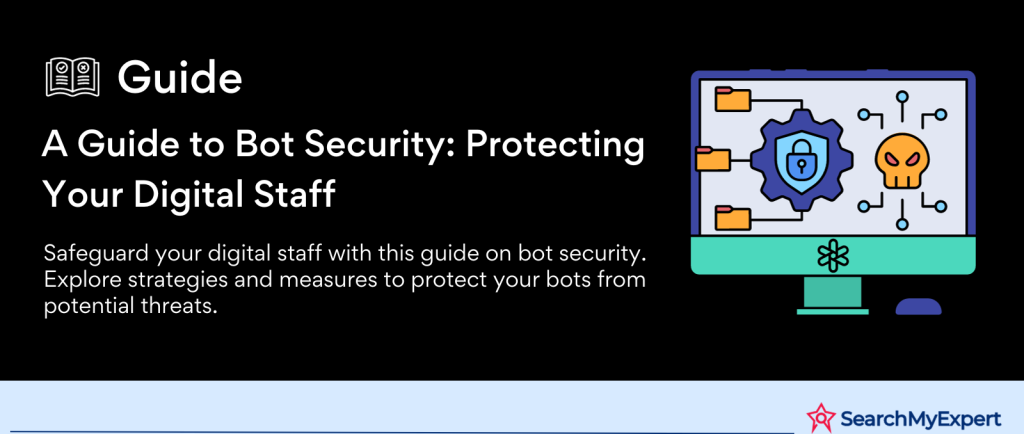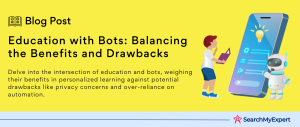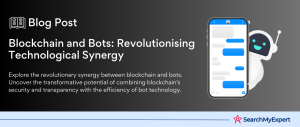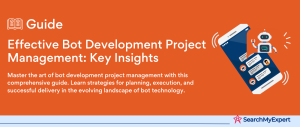Security Considerations in Bot Development
In an era where digital transformation is not just a trend but a necessity, bots have emerged as a crucial element in the technological ecosystem. These automated software applications are revolutionizing the way businesses and consumers interact across various industries. From customer service chatbots in retail to data analysis bots in finance, their applications are diverse and far-reaching. However, as their usage becomes more widespread, the security of these bots is paramount.
Bot Security vs. Traditional Software Security:
Understanding the difference is crucial. Unlike traditional software that often has human intervention at various stages, bots are largely autonomous, making their security needs unique and more complex. The automated nature of bots means they can affect systems and data at a much faster rate than human-operated software, leading to potentially more significant impacts in the event of a security breach.
Consequences of Insecure Bots:
The implications of neglecting bot security can be severe. Data breaches resulting from compromised bots can lead to massive losses of sensitive information, impacting both the organization and its customers. Insecure bots can also be manipulated to spread misinformation, causing reputational damage and influencing public opinion in harmful ways. Additionally, bots are susceptible to abuse, such as being used for spamming, phishing, or other malicious activities.
Identifying Attack Vectors
Categories of Bot Vulnerabilities
- API Endpoints:
Bots often interact with other services and systems through Application Programming Interfaces (APIs). These endpoints can be vulnerable if not properly secured, offering an entry point for attackers. Common issues include inadequate rate limiting, lack of proper authentication, and unencrypted data transmissions. - Code Vulnerabilities:
Like any software, bots can have coding flaws. These range from simple bugs to more serious vulnerabilities like buffer overflows or SQL injection. Such weaknesses can be exploited to alter bot behavior or access sensitive data. - Authentication Mechanisms: Bots frequently authenticate with other systems to access data or perform actions. Weak authentication methods, such as hardcoded credentials or simple password mechanisms, can be easily breached.
- Data Storage Flaws:
Bots often store or process sensitive data. Vulnerabilities in how this data is stored and accessed can lead to data breaches. Issues include insecure data transmission, poor encryption standards, and inadequate access controls.
Exploitation by Malicious Actors
Malicious actors exploit these vulnerabilities to compromise bot operations in several ways:
- API Abuse:
Attackers can use exposed APIs to send malicious requests or extract sensitive data. - Executing Code Remotely: Through code vulnerabilities, attackers can execute arbitrary code within the bot’s environment.
- Identity Theft and Impersonation: By breaking into weak authentication systems, attackers can gain unauthorized access, impersonating the bot or its users.
- Data Breaches:
Exploiting data storage flaws can lead to significant data leaks, impacting both the organization and its users.
Real-World Bot Attacks
- Social Media Botnets: In a notable case, a social media platform faced a botnet attack where thousands of bots were used to spread misinformation. This was made possible through compromised API endpoints.
- Financial Bot Hacking:
A financial service bot was hacked via a SQL injection, leading to unauthorized transactions and data exposure. - Healthcare Bot Data Breach:
A healthcare chatbot suffered a data breach due to insecure data storage, compromising patient data.
Code Security and Sandboxing
Secure Coding Practices for Bot Development
- Input Validation: One of the first lines of defense in secure bot development is ensuring that all input is validated. This includes checking for proper data types, lengths, formats, and ranges. Input validation helps prevent attacks such as SQL injection and cross-site scripting (XSS).
- Secure Library Usage: Bots often depend on third-party libraries. Using outdated or vulnerable libraries can introduce security risks. Regularly updating these libraries and using only trusted sources are key practices in secure bot development.
- Code Vulnerability Testing:
Continuous testing for vulnerabilities in the bot’s code is essential. Techniques like static code analysis, dynamic analysis, and penetration testing help identify and mitigate potential security issues before deployment.
The Role of Sandboxing in Bot Security
Sandboxing is a technique used to run code in a controlled environment, isolated from other system resources. This method is crucial in bot security for several reasons:
- Restricting Privileges:
By running a bot in a sandbox, its access to system resources can be limited. This prevents the bot from performing unauthorized actions even if it is compromised. - Preventing Unauthorized Access:
Sandboxing helps to contain any breach within the isolated environment, preventing it from affecting the rest of the system. - Testing and Monitoring: Sandboxes provide a safe environment to test and monitor bot behavior for any suspicious activities.
Tools and Techniques for Securing Bot Code and Runtime Environments
- Static Application Security Testing (SAST): Tools like SonarQube or Fortify can be used to perform static analysis of the bot’s source code, identifying vulnerabilities early in the development process.
- Dynamic Application Security Testing (DAST):
Tools like OWASP ZAP or Acunetix are useful for testing running applications for vulnerabilities that are only apparent during execution. - Containerization:
Technologies like Docker can be used to containerize bots, providing an additional layer of isolation and security. - Runtime Protection: Tools like RASP (Runtime Application Self-Protection) can detect and respond to attacks in real-time, offering protection during the bot’s operation.
- Automated Security Scanning: Integrating automated security scanning tools within the CI/CD pipeline ensures continuous security assessment throughout the bot’s lifecycle.
Robust Authentication and Authorization
Importance of Strong Authentication and Authorization
In the realm of bot development, securing the interaction between bots, users, and systems is paramount. Robust authentication ensures that only legitimate users and bots gain access, while strong authorization controls determine what actions they can perform once access is granted. This dual approach is critical in preventing unauthorized access and misuse of the bot and the underlying systems.
Authentication Techniques for Bots and Users
- Multi-Factor Authentication (MFA): MFA adds an extra layer of security by requiring more than one method of verification. This could include something the user knows (password), something the user has (security token), or something the user is (biometric verification).
- Token-Based Systems:
In token-based authentication, a user or bot is given a token after initial authentication. This token is then used for subsequent requests. Tokens expire after a certain period, adding an additional layer of security. Examples include JSON Web Tokens (JWT). - Bot Certificates:
Similar to SSL certificates for websites, bot certificates help in verifying the identity of bots. These digital certificates ensure that the bot interacting with the system is the one it claims to be.
Authorization Controls for Bots
Authorization plays a crucial role in defining what a bot can and cannot do. Key considerations include:
- Role-Based Access Control (RBAC):
RBAC involves assigning permissions to roles rather than individual users or bots. A bot assigned to a particular role can only perform actions that the role is permitted to do. - Least Privilege Principle: This principle dictates that a bot should have only the minimum level of access necessary to perform its functions. This limits the potential damage in case of a security breach.
- Attribute-Based Access Control (ABAC):
ABAC allows for more dynamic control, where access is granted based on attributes (e.g., the time of request, location, or the sensitivity of the data).
Data Security and Privacy
Challenges of Secure Data Handling in Bots
- Handling User Data:
Bots often interact with personal user data, which can range from basic contact details to more sensitive information like payment details. Ensuring the confidentiality and integrity of this data is crucial. - Securing Sensitive Information:
Bots in sectors like healthcare or finance handle highly sensitive data. Protecting this information from unauthorized access and ensuring regulatory compliance is a significant challenge. - Logs and Monitoring Data: Bots generate logs that can contain sensitive data. Securely storing and monitoring these logs is essential to prevent potential data leaks and to detect security incidents.
Data Encryption Practices
- Encryption at Rest:
It’s vital to encrypt sensitive data stored by bots. Techniques like AES (Advanced Encryption Standard) can be used to secure data at rest, making it unreadable to unauthorized users. - Encryption in Transit:
Data transmitted by bots, either to external services or to end-users, must be encrypted. Protocols such as TLS (Transport Layer Security) ensure that data remains secure while in transit.
Privacy Considerations for Bot Interactions
- Informed Consent:
Transparency is key. Users should be fully informed about what data the bot collects, how it’s used, and who has access to it. Consent should be obtained in a clear and understandable manner. - Transparent Data Use Policies: Bots must have clear privacy policies outlining data usage. These policies should comply with laws like the GDPR, ensuring users’ privacy rights are respected.
- Data Minimization and Anonymization: Collect only the data that is strictly necessary for the bot’s functionality. When possible, anonymize data to further protect user privacy.
- Regular Privacy Audits:
Conducting regular audits helps ensure continuous compliance with data protection laws and identifies potential areas of improvement in privacy practices.
Monitoring and Response
Importance of Continuous Monitoring for Bot Activity
Continuous monitoring of bot activity is vital for maintaining security. This involves tracking the bot’s interactions, transactions, and any anomalies that might indicate a security breach or malicious activity. Timely detection is crucial in mitigating potential threats and minimizing damage.
Tools for Logging and Analysis
- Security Information and Event Management (SIEM): SIEM tools like Splunk or IBM QRadar aggregate and analyze activity from various data sources, providing a comprehensive view of the bot’s operational security.
- Log Management Solutions:
Tools such as LogRhythm or Elasticsearch offer efficient ways to collect, store, and analyze large volumes of log data from bots, helping in identifying suspicious activities. - Anomaly Detection Systems:
AI-powered anomaly detection systems can identify unusual patterns in bot behavior that may indicate a security incident.
Incident Response Procedures
- Immediate Identification and Isolation:
As soon as a potential security incident is detected, the affected bot should be isolated to prevent further damage. - Assessment and Analysis: Conduct a thorough analysis to understand the nature and extent of the incident. This involves examining logs, system status, and the bot’s recent activities.
- Containment and Eradication: Steps should be taken to contain the incident and eradicate the cause, such as patching vulnerabilities or removing malicious code.
- Recovery and Restoration: Once the threat is neutralized, efforts should focus on safely restoring the bot’s operations and any affected systems.
- Post-Incident Review and Reporting:
Conduct a post-mortem analysis to understand what happened, why, and how similar incidents can be prevented in the future. Documenting and reporting the incident is also crucial for regulatory compliance and for improving future response strategies.
Staying Informed and Updated
The Dynamic Nature of Bot Security
The field of bot security is constantly evolving. New threats emerge technologies advance, and attack strategies become more sophisticated. Staying informed and adapting to these changes is not just beneficial but necessary for maintaining robust bot security.
Resources and Communities for Staying Updated
- Online Forums and Communities: Platforms like Stack Overflow, Reddit’s r/cybersecurity, and specialized forums provide a space for professionals to discuss the latest in bot security.
- Industry Conferences and Webinars:
Events like Black Hat, DEF CON, and various cybersecurity webinars are excellent for learning about the latest research, trends, and strategies in bot security. - Security Blogs and News Sites: Following reputable cybersecurity news sources and blogs, such as Krebs on Security or The Hacker News, helps in staying updated with the latest threats and vulnerabilities.
- Academic Journals and Whitepapers:
Reading scholarly articles and industry whitepapers can provide in-depth insights into advanced security topics.
Ongoing Security Assessments and Improvements
- Regular Security Audits:
Conducting periodic security audits helps identify vulnerabilities and areas for improvement in bot security. - Penetration Testing:
Regularly testing your bots and systems through ethical hacking can uncover potential security gaps. - Keeping Software Updated:
Regularly updating bot software, including libraries and dependencies, is crucial to protect against known vulnerabilities. - Employee Training and Awareness:
Educating team members about the latest security threats and best practices is key to ensuring a well-rounded security posture. - Feedback and Learning Loop:
Creating a feedback loop where insights from security incidents are used to improve future security measures is vital.
Conclusion
Ensuring the security of bots is a multifaceted challenge that requires a blend of technical expertise, continuous learning, and proactive strategies. From understanding the various attack vectors and implementing strong authentication and authorization measures to ensuring data security and privacy, each aspect plays a crucial role in safeguarding bots. Additionally, the importance of staying informed and regularly updating security measures in this rapidly evolving field cannot be overstated. By adopting these comprehensive practices, developers and organizations can not only protect their bots from current threats but also prepare them to withstand future challenges in the world of bot security.
Elevate your efficiency with Bot Development Service Companies.
Table of Contents
Toggle






